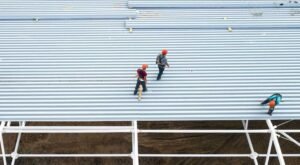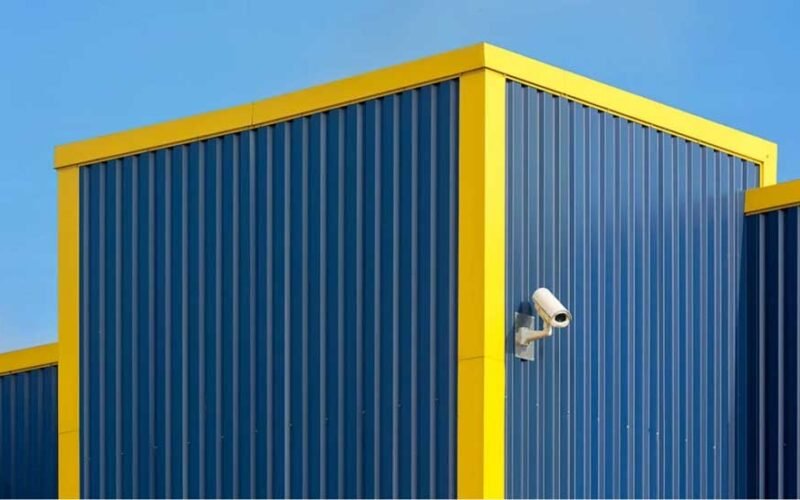Pexel (Cropped)
Roofing and flooring must be durable and strong enough to withstand wear and tear over time, especially if used outside, where they will be exposed to the elements. For these reasons, many construction managers opt for using steel decking. Its unique strength for ensuring structural integrity, coupled with its versatility, cost-effectiveness, and ease of installation, make it the perfect choice for any roof or floor.
Why Steel?
Steel, in and of itself, is exceptionally strong and can support heavy loads, allowing it to span significant distances with fewer support beams. This plays well in using steel decking to create open-design layouts that have become popular in many modern houses and buildings. However, its strength is only one of the many advantages steel decking has in construction.
Benefits of Steel Decking
Durability
Wind, rain, and extreme heat and cold have little effect on steel decking thanks to its durability. Because it is not prone to burning or melting easily, steel is also often used to control and contain fire spread, providing building occupants additional safety and time in the event of a fire to evacuate the building. Steel decking is also resistant to rot and infestations from insects, giving the building a longer life span with fewer needed repairs. Certain types of steel decking can also be used alongside other building materials, such as wood or concrete, reinforcing the strength of those materials.
Flexibility
With the right tools, steel decking can be cut, shaped, and easily adapted to most any project size to meet specific requirements, making it exceptionally flexible to work with.
Versatility
Steel decking’s flexibility plays right into its versatility. While the decking varies in length, it can be cut and shaped to fit the needs of a specific project, opening up the number of ways the material can be used. Steel decks also come in a variety of different sizes and thicknesses—including N deck, B deck, and others—which allows them to be used in many types of flooring and roofing systems as well as fencing, sliding, and other construction applications.
Affordability
The initial cost of manufacturing steel decking may seem fairly steep, but when compared with the long-term maintenance and upkeep, steel decking is more cost-effective than other flooring and roofing materials such as tile, wood, asphalt, or concrete. As an additional benefit, steel decking is faster and easier to install, saving on labor costs.
Ease of Installation
Even though steel decking is a robust material, it is also fairly lightweight in construction, especially when compared to concrete slabs. This makes it easier to handle and reduces the bearing load on the structure’s foundation. The lightweight nature of steel decking systems allows for fast and efficient installation, saving both time and labor costs.

Client Provided Image (Cropped)
Disadvantages
Steel decking presents many advantages when used in construction. However, like any material, it has several drawbacks as well.
Heating and Cooling
While the metal’s structural integrity is relatively unaffected by hotter and cooler weather, both can respectively heat or cool steel considerably, which in turn can affect the building’s internal environment and add to the cooling and heating costs. This can be mitigated, however, by adding thermal insulation during construction.
Echo Effect
If you have ever walked on any floor made of bare steel—such as a deck, raised platform, or bleacher stairs and seating—you likely know that it creates a fair amount of noise that seems to ripple through the whole structure, especially if something falls on it. This effect can be reduced by adding soundproofing materials and insulation, but doing so will mean additional costs.
Chemical Exposure
Exposing steel decking to certain chemicals like peracetic acid, sulfates, and chlorides may cause it to deteriorate or rust over time. If you plan to use steel decking in an area where this may be an issue, consider mitigating this through treatments that cover the metal in protective coatings.
Steel Types and Coatings
Stainless Steel
Stainless steel is one of the most well-known types of steel in the United States. It is extremely versatile, used both in and out of construction. When decking is made of stainless steel, it has the added advantage of being highly resistant to corrosion and rust. This makes it perfect for interior and exterior uses. It is often used in hospitals and research facilities because its non-corrosiveness allows the flooring and roofing to maintain a higher level of cleanliness.
Galvanized Steel
While less well-known, galvanized steel is a cost-effective type of steel—in part because it is easy to maintain—which is likely why it is the most commonly used steel type for flooring and roofing. During fabrication, the steel sheet is galvanized, which means it is coated in molten zinc. When the zinc cools, it forms a layer of protection for the steel against corrosion and rust. The protected steel is then shaped and cut.
Corrugated Steel
One type of galvanized steel is corrugated steel, which is called this for its distinct wavy or “wrinkled” pattern. This steel’s added strength and flexibility make it an excellent roofing material.
Conclusion
Strength and durability are crucial for flooring and roofing systems, especially when used for outdoor applications exposed to harsh weather conditions. That is why steel decking is the preferred building material for many construction managers who need the structural strength and integrity it offers. Together with its affordability, versatility, and ease of installation, steel decking is an ideal solution for countless construction applications.










